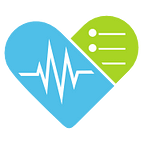Early diagnosis using Electronic Health Records: Improve Your Patient Care
Electronic Health Records (EHR) are making progressive contributions to the healthcare industry. By implementing predictive analytical practices on EHR systems using the revolutionary tools and software available today, hospitals are able to estimate the risk of a healthy person developing symptoms of a chronic disease later in life. This has made it possible for clinical experts to start treatment early and reduce potentially fatal complications associated with the disease.
To put it simply, Electronic Health Records are patient-specific information gathered in real-time to make concerning information available to authorized users. These records comprise a patient’s medical history, ongoing treatments, medications prescribed, care being administered, diagnostics, radiology images, lab results, and other patient-centered details. This data can be used to derive insights, improve decision making, and create predictive analytical models to accurately determine the risk of early disease onset.
Crucial patient information contained in Electronic Health Records has resulted in:
- Increased patient engagement
- Better coordination between operating physicians
- Transformed health care
- Improved quality of health care services
- Increased efficiency and interoperability
- Quicker accessibility to patient records
- Early detection of diseases
- Reduced costs and time
- Secure exchange of records on cloud
- Faster decision-making with regards to diagnosis and potential treatments
How early can we diagnose and cure the disease with the help of EMR?
Efforts are still underway to accelerate the diagnosis of potential diseases but many hospitals and research facilities around the world have made ground-breaking progress.
In a research paper published by Massachusetts General Hospital (MGH), it was concluded that researchers are now able to “predict risk of dementia diagnosis up to eight years in advance.” Their predictive algorithm is based on machine learning which uses Natural Language Processing (NLP) and the temporal information of over 267,855 patients contained in EHRs like diagnoses and medications to estimate early dementia.
Over 5.5 million American citizens are affected by Alzheimer’s every year. And an early detection of cognitive symptoms in patients could be the approach towards finding effective potential treatments to reverse or slow down the progression of Alzheimer’s.
According to one of the authors of the research paper, Thomas McCoy, Jr., “We need to detect dementia as early as possible to have the best opportunity to bend the curve. With this approach we are using clinical data that is already in the health record, that doesn’t require anything but a willingness to make use of the data.”
MGH’s team of researchers also believes that duplicated efforts by fellow practitioners around the world could provide necessary evidence and data to conduct actionable clinical trials.
In another clinical research undertaken by clinicians from IBM Research, Scripps Health, Sutter Health, and Inova Heart and Vascular Institute, it was concluded that the prediction window length for early detection of heart failure had decreased by 2 years. The study was conducted on 1,684 primary care cases of heart failure and employed machine learning models and longitudinal EHR data to yield results.
To provide more evidence, we have researchers at College of Information Sciences and Technology (CIST) who are actively scanning EHR systems to study a patient’s medical data to predict the onset of a disease.
“Say we want to predict whether a patient will suffer from diabetes in the future. We will use the patient’s historical data, which in some ways may be related to diabetes, such as high blood pressure or heart failure, and those are risk factors for the target disease,” says Fenglong Ma, an assistant professor at CIST.
He continued, “The model can output the probability of whether the patient will suffer some disease. For some patients, they may not have clear symptoms at the current time, but the model can make a prediction.”
What can be done to improve patient care?
An improved flow of information between health care facilities is necessary to leverage digital progress and improve the quality of care provided to patients. Companies like Halemind with their powerful cloud-based data management technology are poised to revolutionize patient experiences and drive operational efficiency in hospitals, medical universities, and clinical institutions.
Halemind’s connected EMR systems enable quicker accessibility and shareability of patient records and reports. This enhances the decision-making process at clinics, pharmacies and laboratories, and helps medical professionals make more accurate predictions regarding the onset of diseases. This swift shareability of medical reports online at any time, from anywhere also boosts the efficiency of diagnosis and enables hospitals to start treatment early.
To further improve patient care, it is important to incorporate effective data mining practices with focus on the quality of data being gathered. There are several instances when patients with a chronic disease might visit a doctor for a relatively minor health condition. This might lead to the compilation of noisy information or unnecessary data which can eventually impair the effectiveness of Artificial Intelligence as well as mislead medical professionals in assessing Electronic Health Records. However, Halemind’s machine learning models are equipped to eliminate this noise, and thus, enable accuracy and efficiency in diagnosis.
As digital technology continues to transform the world we live in, health care stands to benefit from widespread improvements.
As the leading connected EMR in India, Halemind will be at the forefront, driving progressive changes in the way care is delivered. Using their predictive analytical tools and an integrated approach towards management, the healthcare industry can anticipate plenty of opportunities to detect potential diseases and employ preventive care to eliminate risks.
If you’d like to learn more about Halemind, visit us on our website.
